Iceland’s stunning landscapes and rugged terrain make it a unique and thrilling destination. However, driving in Iceland requires more than just a driver’s licence and a sense of adventure.
Whether you’re planning a road trip along the famous Ring Road or exploring the remote highlands, there are essential things you need to know before hitting the road in Iceland. In this guide, we’ll cover 15 crucial tips to ensure a safe and enjoyable driving experience in this breath-taking country.
1. Iceland driving side
In Iceland, you drive on the right side of the road and overtake on the left. Just like the US and most countries in Europe.
If you are from a country that drives on the left side of the road, remember this at all times.
Also, if you’ve never driven on the other side of the road and are wondering if it’ll be difficult, then the answer is no; it won’t be that difficult. It’ll take a few hours to orient yourself, and you’ll have to put in conscious effort to stay on the right side of the road.
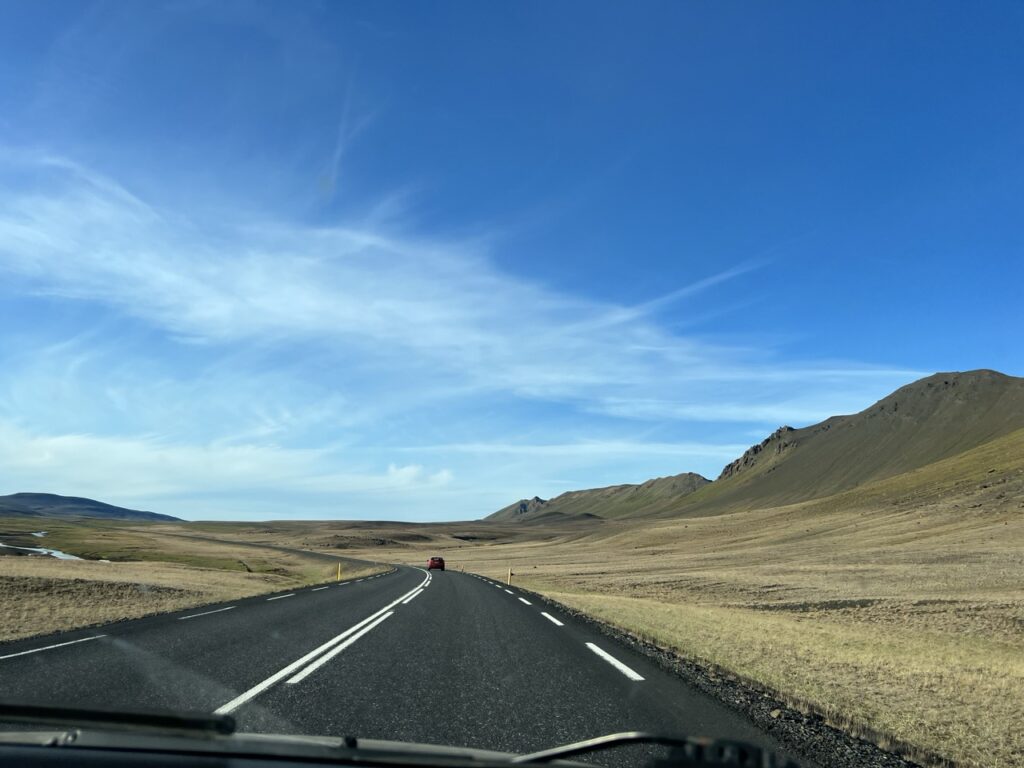
2. Roads in Iceland
It is very important to begin with the type of roads because, depending on which type of roads you plan to go on, you’ll select your vehicle to get around Iceland.
- Primary roads: These are well-maintained, usually paved, and have one or two digits. The main road in Iceland, the Ring Road, is an example of a paved road.
- Secondary Roads: These are less maintained (could be gravel roads) and have three digits. Often, the road to attractions and airbnbs can be unpaved.
- Mountain Roads: Marked with an “F,” these are called f-roads. These are considered to be dangerous; hence, only four-wheel drives are allowed on them. You can only go on these roads with a 4×4 car. Camper vans are typically not allowed and these roads are especially tough to drive on in the winter.
3. Choosing the Right Vehicle for Driving in Iceland in Summer
- Manual vs. Automatic: Automatic cars cost a bit more in Iceland since manual cars are more easily available. However, automatic cars are absolutely worth it for ease, especially if you’re from a country that drives on the left side of the road.
- Compact hatchbacks are enough in most cases: If you plan to stick to paved roads like the Ring Road and popular tourist attractions, then a compact car should suffice. These vehicles are generally more affordable and fuel-efficient and you can even drive them on light gravel roads for a short duration.
- 2 Wheel Drive vs. 4 Wheel Drive: In most cases, a 2-wheel drive is sufficient. However, if you’re planning to explore the highlands or take any other f-roads, then you’ll need a 4×4 equipped with better ground clearance, larger tyres, and increased stability, allowing you to tackle the challenging terrain with ease.
Check out rental cars on Northbound (an Icleandic operator), Discover Cars, or Rental Cars.
You can also read this complete guide on renting a car in Iceland before you book!
4. Driving in Iceland in Winter
Driving in winters is a whole other ball game. Travel to Iceland in the winter if you’re comfortable driving in icy conditions. But even if you’re not, it is not impossible if you’re well prepared and a confident driver. Here are a few factors to know and consider:
- The main roads are usually shovelled so there might be no snow on the road on clear days. However, immediately after snowstorms, you will be subjected to snowy, icy roads.
- Beware of black ice. Roads may look clear but they may be covered in black ice, leading to an accident so you must know how to spot them and drive on them.
- Rent a 4×4 with winter tyres for maximum safety between November and early May. Snow chains and studded tyres can also be used.
- Check your tyres, spare tyre, emergency gear, brakes, and lights, before leaving the rental car agency.
- Stick to the South Coast because the north often has road closures.
- Drive slowly, allow more time than Google Maps tells you and leave more distance between cars, as it will take longer to brake.
- Check road conditions and closures on road.is and weather on vedur.is or the Vedur app (Android or iOS) . You will need to be flexible during road closures so check these websites before you leave for the day so you can be prepared.
- Download the 112 Iceland app: 112 is the emergency number of Iceland, which you can call when the situation arises. However, you should also download this app that connects to emergency responders in Iceland and helps locate your vehicle if you find yourself in a dangerous situation.
5. Re-fuel your car after the halfway mark
There are sections of the ring road that do not have gas stations. I would recommend refuelling your vehicle each time you have less than half a tank of gas. This is what we did to be on the safe side.
Use the website Gasvaktin.is to find cheap gas stations near you. Generally, the cheapest gas stations are
- ÓB
- Orkan
- Dælan
- Atlantsolía
Despite these being the cheaper gas stations, we usually went to N1. Fuel at N1 might be slightly more expensive, but the facilities they have at the gas stations, clean toilets, and a wide variety of food, made us go there each time.
Tip: Most rental companies will give you a fuel discount chip attached to your car keys. This chip will give a 3 kr/liter discount at the selected gas station chains. All you need to do is scan the chip at the beginning of the transaction.
Bonus tip: Some gas stations offer free coffee or additional discounts when you have their card or chip. Do not forget to show the chip! We totally forgot and only realised it at the end of the trip.
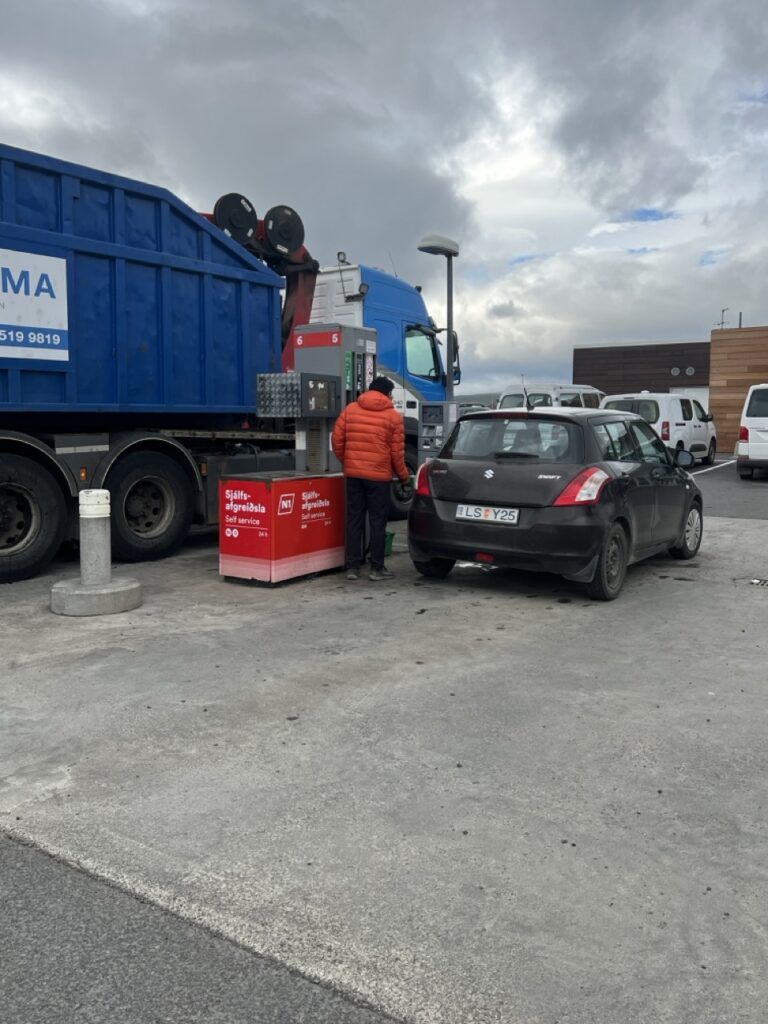
6. A credit or Debit Card with Pin may be required
The prices are lower at the self-service gas stations. Even if you arrive at a gas station with a service building and staff, look for self-service pumps to fill gas at a cheaper cost.
However, it is important to remember that you must have a card with a chip and a PIN card to use at these stations. Since there is no staff, you can’t sign for your transaction. So if you don’t have a credit or debit card with a chip and pin, contact your local bank before leaving your country, and they should sort it out for you.
7. Petrol Credit Card Hold
When you choose the “Fill-Up” or “Full-Tank” option at a gas station in Iceland, the machine will place a hold on your card for around 15,000–20,000 ISK (about 100–140 EUR). This charge will happen automatically, and later you will be reimbursed for the amount that is unused. It takes between 1 and 7 days.
If you do not want this to happen, then choose another of the other options for refuelling: 1000 ISK, 2000 ISK, 3000 ISK, etc.
8. Beware of Speed Limits and Road Signs
It is vital to adhere to speed limits in Iceland, as it can be dangerous if you don’t and speeding fines can be hefty. The general speed limit is 30–50 km/hour in populated areas, 80 km/hour on gravel roads in rural areas, and 90 km/hour on paved roads. Do pay attention to road signs and any specific instructions related to individual roads.
If you’re stopped by police for speeding, you’ll typically have the option to pay the fine immediately or receive a ticket by mail. Paying on the spot offers a 25% discount so it is the better option. Ensure you obtain a receipt for an on-the-spot payment. If you opt for mail, the car rental company may charge a handling fee, as they will have to provide your information to the police.
9. Wildlife encounters
Watch out for Icelandic wildlife, especially sheep, which often roam freely. Be cautious, particularly during the breeding season (spring and early summer). If you, by chance, have an accident involving animals, it can get ugly with the farmers. So be very careful.
10. Weather Woes: How to Prepare for Iceland’s Ever-Changing Climate
Be prepared for diverse and challenging road conditions, especially in the winter months. Iceland’s weather can change rapidly, so check the weather forecast on the Vedur app (Android or iOS) and road conditions regularly.
Beware that you may not be able to reach certain spots if the roads are closed due to the weather. Set your expectations accordingly and do not feel bad if you’ve got to cut your trip short. This is again, especially for the winter months but can happen any time of the year for reasons beyond even the weather.
11. Don’t stop your car and park on the side of Ring Road
Parking your car at the side of the ring road is frowned upon. If you need to park, do it at the designated picnic or parking spots along the ring road or stop at the gas stations.
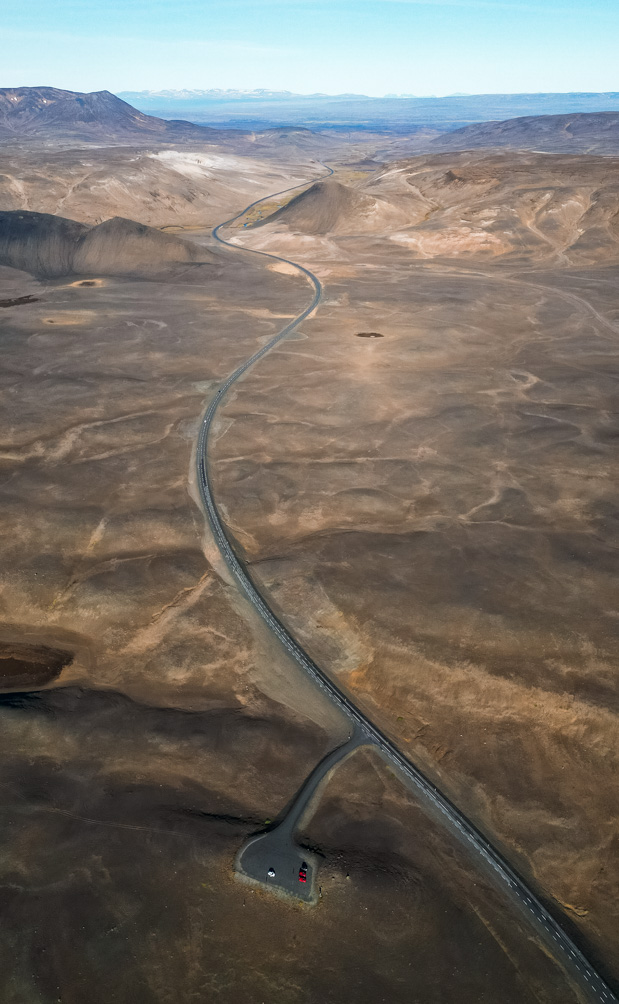
12. App for parking payments
You will have to pay for parking in Reykjavik and at a lot of attractions in Iceland. The Parka app is very useful for paying these parking charges. Another useful thing is that you can also pay for several campsites in Iceland through the app (you can find the list on their web page).
13. Tolls in Iceland
There’s only one toll road in Iceland: the Vaðlaheiðargöng tunnel on Route 1 near Akureyri in North Iceland. You will cross this tunnel if you do the whole ring road.
The rule is that you must pay the Vaðlaheiðargöng (Vadlaheidi Tunnel) toll online within 24 hours before or after driving through the tunnel. You can pay online at mitt.veggjald.is or by using the Veggjald app.
The one-way toll price is:
- Regular passenger car under 3.5 tonnes: 1,500 ISK
- Vehicles weighing between 3.5 and 7.5 tonnes (camper van): 2,500 ISK
- Vehicles weighing over 7.5 tonnes (motorhome): 5,200 ISK
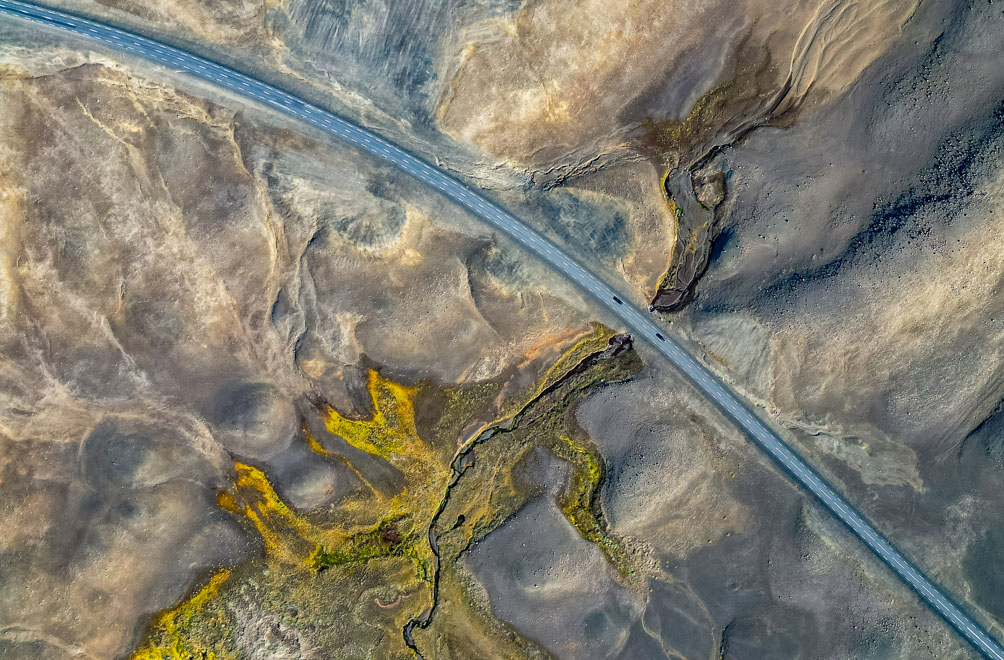
14. Be careful when opening your car door
Hold your car door with both hands when opening it. The wind is so strong in Iceland sometimes that the car door can blow off, and no, this is not covered in any insurance policy. If you don’t do so, it may also damage the body of the car parked beside yours. So be careful.
15. Daylight Hours
Be aware of the daylight hours, especially in winter. It is best not to drive after dark. In winters, you only have 4-5 hours of daylight, while in summer, you have over 21 hours of daylight.
16. Plan Your Route
Plan your route in advance and be aware of the distances between destinations. Some areas may not have many amenities, so plan accordingly. I would suggest marking all the spots you intend to visit in Iceland on a map (like I have done below). This will not only help you select hotels in the right areas but also let you know exactly where you’d like to visit next on your Iceland road trip.
Refer to our Iceland road trip itinerary to plan your route.

17. Download offline Maps
Before your trip starts, download maps for offline use. The internet can be dodgy in remote areas, so it is best to have offline maps downloaded on your choice of app: Google Maps or Maps.me.
18. Headlight Usage
Headlights must always be on, both day and night, as a safety measure.
19. Do not drive after drinking
Driving in Iceland after the consumption of alcohol or drugs is illegal. Don’t drive under the influence, even if it is acceptable in your own culture. In Iceland, it is forbidden! The minimum punishment for a first offence is a fine of at least 100,000 ISK.
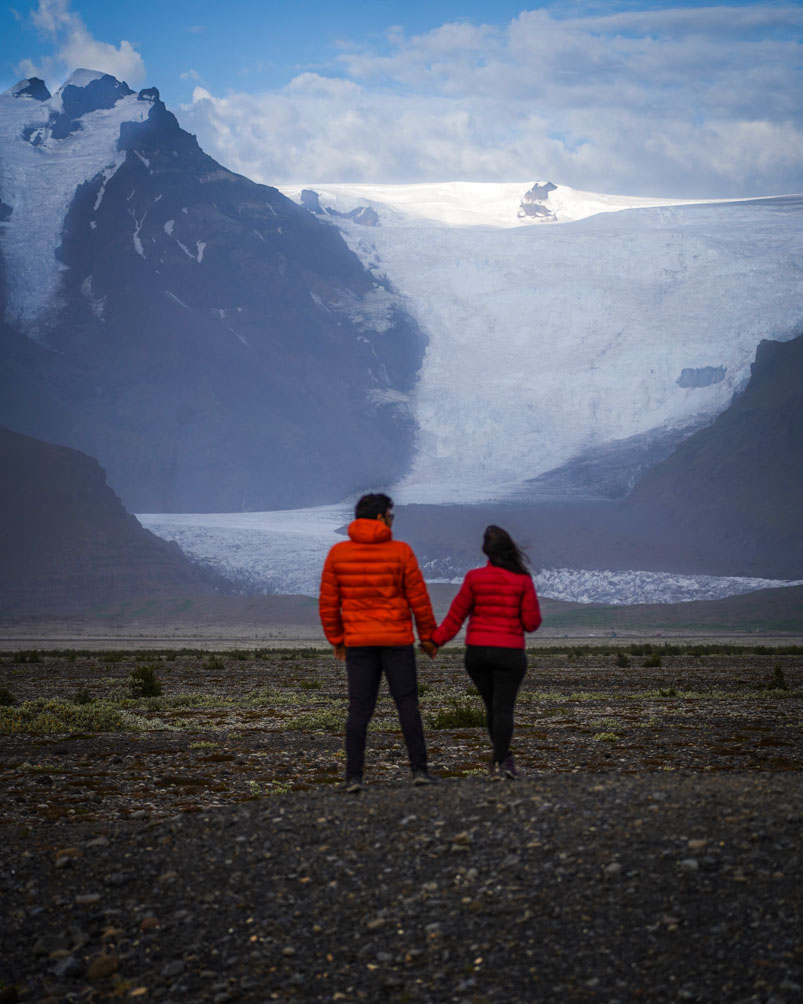
20. Do not get distracted by the scenery
Last but not least, do not let the epic scenery distract you from paying attention when driving in Iceland. If there is something interesting to see, park your car in the nearest parking lot!
Driving in Iceland is not that tough, provided you know all the things to expect. So keep these must-knows in mind and prepare for an epic Iceland road trip.
This blog post on ‘Driving in Iceland’ has affiliate links that enable us to earn a small commission when you make a purchase, with no extra cost to you. We only recommend products and activities we like and those that might interest you. If you like any suggested product, do buy from the given links.
